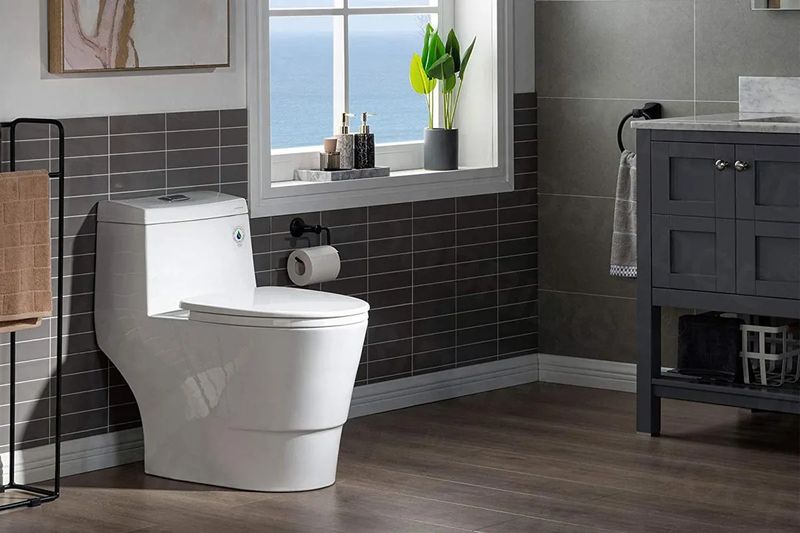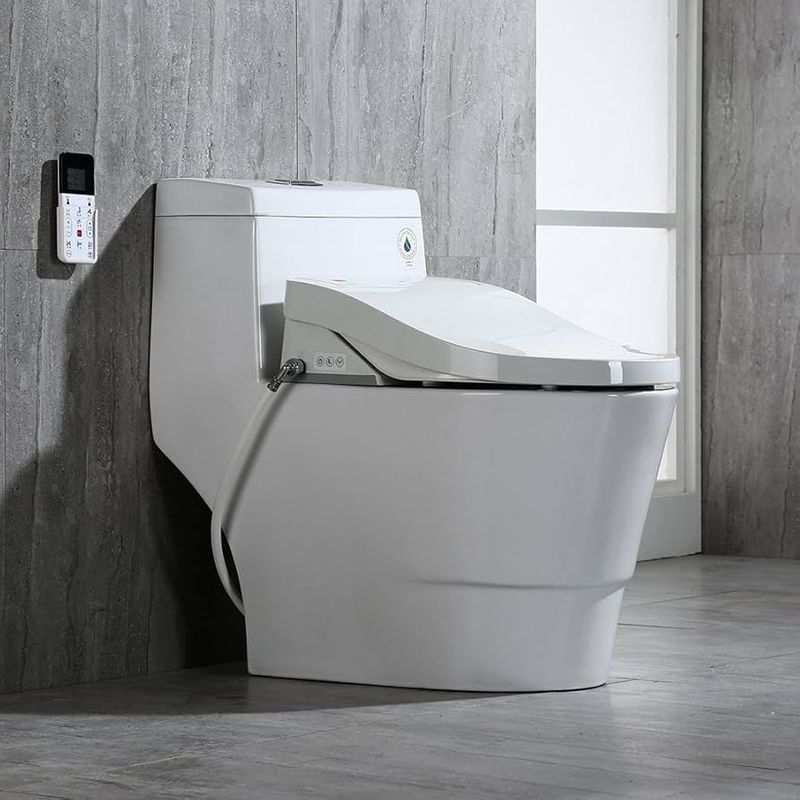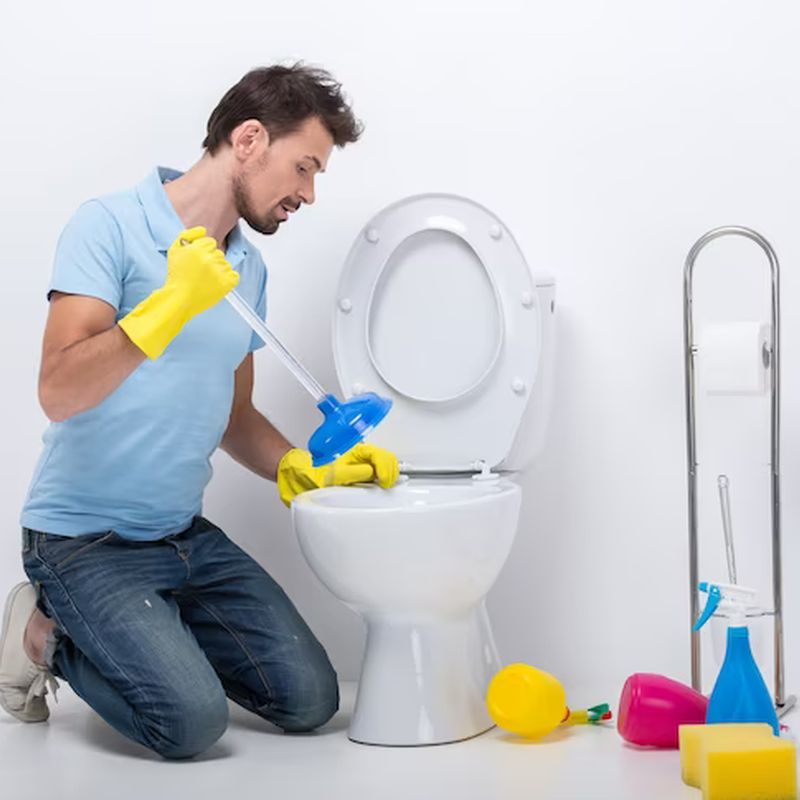 English
English
Jabra Sanitary is a sanitaryware supplier offering toilets, sinks, faucets, bathtubs, etc., at competitive prices. If you're a distributor, wholesaler, or project contractor, get a quote today!
 $23.9 Limited-time Offer
$23.9 Limited-time Offer Consignment Policy
Consignment Policy 20 Years of Experience
20 Years of Experience
A dual flush toilet is a popular and eco-friendly option. It allows users to choose between two different flush volumes: one for liquid waste and one for solid waste. However, like any other plumbing fixture, dual flush toilets can face problems over time that hinder their performance and effectiveness.
In this article, we'll explore 11 common dual flush toilet problems and provide practical solutions. Also, we will offer the troubleshooting advice you need to maintain your dual flush toilet in top condition, and we will recommend top brands to avoid these problems with dual flush toilets as much as possible.
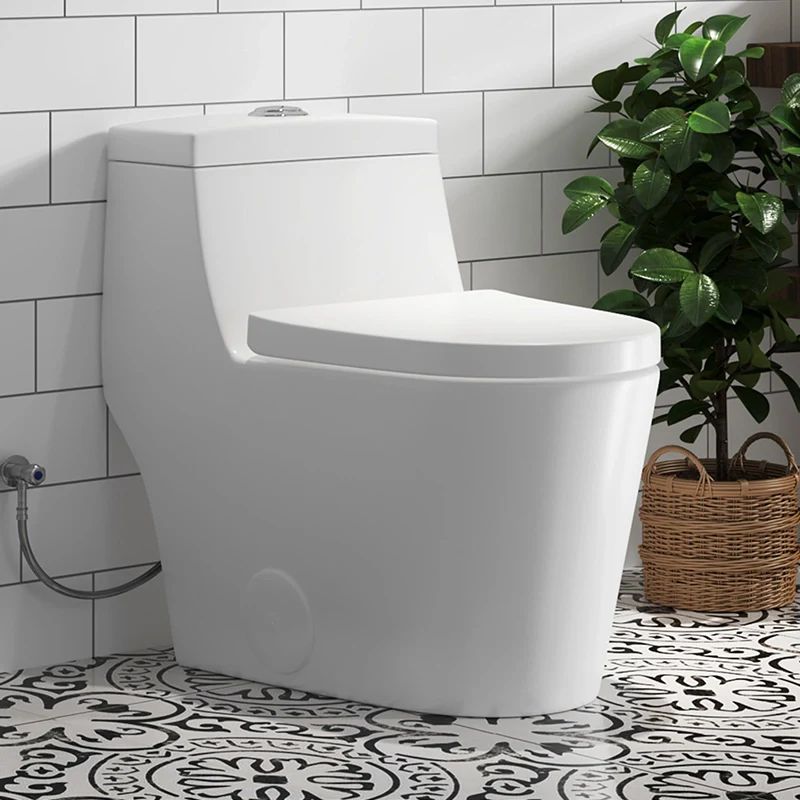
Table of Contents
Before You Solve Dual Flush Toilet Problems
11 Common Dual Flush Toilet Problems and Solutions
Adjust the Float Valve to Prevent Constant Running Water
Maintenance Steps to Avoid Water Leaks in Dual Flush Toilets
How Do I Properly Clean the Flushing Mechanism to Prevent Clogs
Top Brands of Dual Flush Toilets Known for Fewer Problems
FAQs
Final Thoughts
Before You Solve Dual Flush Toilet Problems
When tackling any dual flush toilet problems, preparation is key. Addressing problems effectively requires careful planning, proper tools, and an understanding of your toilet design. Below are five essential tips to keep in mind:
Understand Local Codes
Before beginning any repair, check local plumbing codes to ensure compliance.
Some regions have specific guidelines regarding water-saving fixtures or plumbing work that homeowners can legally perform. Ignoring these codes could result in fines or further complications.
Handle Connectors with Care
Dual flush toilets rely on delicate connectors and mechanisms. When detaching or reconnecting components like the flush button, water supply line, or flapper chain, avoid using excessive force.
Mishandling these toilet parts can lead to further damage or even replacement.
Remove the Tank Lid Carefully
The tank lid is typically heavy and fragile. Place it on a soft and stable surface to prevent cracks or chips.
Damage to the tank lid could create problems with the flush button mechanism and result in costly replacements.
Purchase Compatible Repair Parts
Always buy parts designed for your specific toilet model. Incompatible components can cause improper function and void warranties. Refer to the manufacturer's guide for accurate part identification.
Consult a Licensed Plumber if Needed
If the problem seems beyond your expertise or involves complex internal components, it's best to consult a licensed plumber. Professional assistance ensures the job is done right without risking further damage.
11 Common Dual Flush Toilet Problems and Solutions
Users often encounter common dual-flush toilet problems that impact their functionality. Below, we address the 11 most frequent problems with dual flush toilets, their causes, and the solutions:
1. Frequent Clogging
Causes:
- Insufficient water flow due to low flush volume.
- Narrow plumbing pipes that restrict waste movement.
- Flushing inappropriate items, like wipes or sanitary products.
Solutions:
- Adjust the flush mechanism to increase water volume for solid waste.
- Use a plunger to dislodge minor blockages.
- Avoid flushing non-biodegradable items.
- If clogs persist, use a plumbing snake or consult a plumber to inspect the drainage system.
2. Constant Running Water
Causes:
- A faulty flapper or flush valve seal that fails to close properly.
- Malfunctioning fill valve or float mechanism.
- Misaligned flush buttons causing continuous activation.
Solutions:
- Inspect and replace the flapper or flush valve seal.
- Adjust or replace the float mechanism to regulate the water level.
- Ensure the flush buttons are correctly aligned and not stuck.
3. Water Leaks into Bowl
Causes:
- Loose or worn-out gaskets and seals around the tank bolts or flush valve.
- Cracks in the tank or bowl.
- Improperly tightened water supply connections.
Solutions:
- Replace damaged seals or gaskets with compatible parts.
- Inspect the tank and bowl for cracks. If damaged, replace them.
- Tighten the water supply line connections using a wrench.
4. The Dual Flush Toilet Will Not Flush Completely
Causes:
- Blocked rim holes or siphon jets restrict water flow.
- Low water level in the cistern.
- A faulty or improperly installed flush mechanism.
Solutions:
- Clean rim holes and jets with a brush or vinegar solution to remove blockages.
- Adjust the water level to the manufacturer's recommended height.
- Inspect the flush mechanism for damage and replace it if necessary.
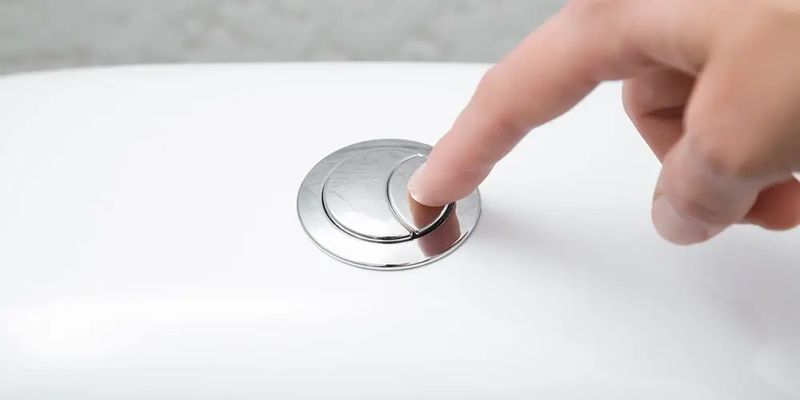
5. The Cistern Fills Very Slowly
Causes:
- Partially closed water supply valve.
- Sediment buildup in the fill valve reduces water flow.
Solutions:
- Fully open the water supply valve to increase water flow.
- Clean the fill valve to remove sediment, or replace it if cleaning does not resolve the issue.
6. The Flushing Volume Is Not Correct
Causes:
- Incorrect calibration of the dual flush system.
- Malfunctioning flush valve or actuator buttons.
Solutions:
- Adjust the dual flush mechanism to provide appropriate water volumes for liquid and solid waste.
- Replace the flush valve or buttons if they are worn out or damaged.
7. Not Saving on Water Usage
Causes:
- Users press the full flush button unnecessarily.
- The faulty dual flush mechanism leads to water wastage.
Solutions:
- Educate users about the purpose of the half and full flush buttons to avoid unnecessary water usage.
- Repair or replace the dual flush mechanism if it causes excessive water use.
8. Button Is Getting Stuck or Not Working
Causes:
- Accumulated dirt or debris around the flush button.
- Faulty or misaligned button mechanism.
Solutions:
- Clean the area around the button to remove dirt or debris.
- Re-align or replace the button mechanism to ensure smooth operation.
9. The Need for Constant Cleaning
Causes:
- Poor quality glaze on the toilet bowl, causing stains to stick.
- Hard water deposits leave residue in the bowl.
Solutions:
- Use a quality toilet cleaner to tackle stains and residue.
- Install a water softener to minimize hard water deposits.
- Consider upgrading to a toilet with a high-quality and non-stick glaze.
10. The Toilet Seat Is Cracked or Old
Causes:
- Regular wear and tear over time.
- Accidental damage due to impact.
Solutions:
- Replace the seat with a new one that matches your toilet model.
- Opt for a durable and high-quality seat material like wood or thermoplastic for longevity.
11. The Toilet Moves When You Sit on It
Causes:
- Loose bolts secure the toilet to the floor.
- A damaged or improperly installed wax ring beneath the toilet.
Solutions:
- Tighten the bolts securing the toilet to the floor using a wrench.
- If the issue persists, remove the toilet and inspect the wax ring. Replace it if damaged or improperly seated.
In conclusion, regular maintenance is essential to keep them performing optimally. When in doubt, consulting a licensed plumber can save you time, effort, and potential damage.
Adjust the Float Valve to Prevent Constant Running Water
A constantly running toilet is one of the most common and wasteful dual flush problems. It can significantly increase water bills and signal that your toilet's float valve is improperly set.
The float valve controls the water level in the tank and ensures the fill valve shuts off once the tank is full. Here are the steps to adjust the float valve:
Turn Off the Water Supply: Start by shutting off the water supply to the toilet. Locate the valve near the base of the toilet and turn it clockwise until it stops.
Open the Tank Lid: Remove the tank lid carefully and place it on a secure surface.
Locate the Float Mechanism: In dual flush toilets, the float valve is often a cylindrical or ball-like component attached to the fill valve. <Learn what are dual flush toilets>
- For ball floats, gently bend the arm downward to lower the water level or upward to raise it.
- For cylinder floats, locate the adjustment clip or screw and move the float up or down.
In the end, don't forget to test the adjustment: You should turn the water back on and let the tank refill. Ensure the water stops at the appropriate level without overflowing.
Maintenance Steps to Avoid Water Leaks in Dual Flush Toilets
Water leaks in dual flush toilet bowls can lead to significant water wastage and increased utility bills. Routine maintenance can prevent leaks from developing.
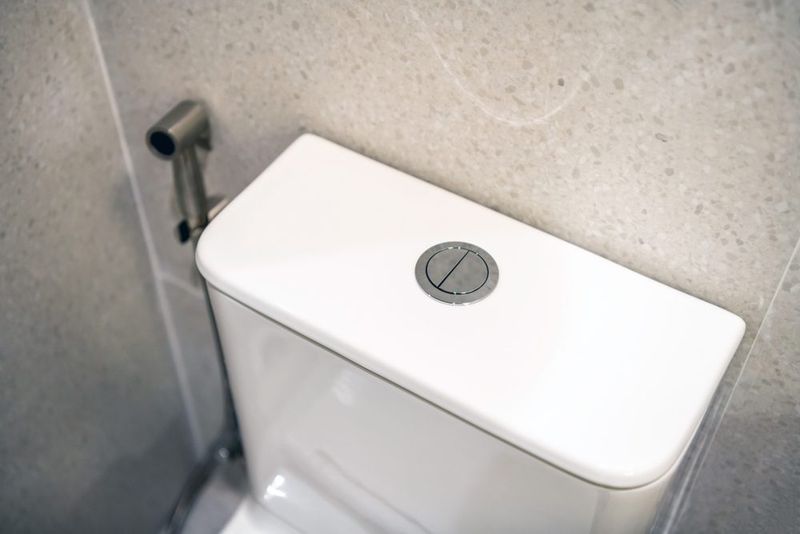
Here are essential steps to maintain your dual flush toilet and avoid water leaks:
Inspect Seals and Gaskets Regularly
The seals and gaskets in your dual flush toilet, particularly those around the flush valve, fill valve, and tank bolts, are common points for leaks.
Over time, these components can wear out or loosen. Inspect them regularly for signs of cracks, warping, or deterioration. Replace damaged gaskets with compatible ones to maintain a watertight seal.
Check the Water Supply Line
The connection between the water supply line and the toilet tank can loosen over time. Tighten the fittings periodically to prevent leaks. Avoid overtightening, as it can damage the threads or cause cracks in the connection.
Clean the Flush Valve and Flapper
Mineral deposits or debris buildup on the flush valve or flapper can prevent them from sealing properly. Clean these components using a vinegar solution or a non-abrasive cleaner.
Replace the flapper if it shows signs of wear or does not seal effectively.
Adjust the Water Level
If the water level in the tank is too high, it may spill into the overflow tube, causing a constant leak. Adjust the float valve to set the water level about one inch below the top of the overflow tube.
Inspect the Toilet Tank for Cracks
Hairline cracks in the tank can cause slow leaks. Carefully examine the tank's interior and exterior surfaces. If cracks are present, the tank may need to be replaced.
How Do I Properly Clean the Flushing Mechanism to Prevent Clogs
The flushing mechanism in a dual flush toilet is a critical component responsible for efficiently removing waste with minimal water usage. Over time, debris, hard water deposits, and other buildup can obstruct the mechanism. These can lead to clogs or reduced performance. Proper cleaning of the flushing mechanism ensures smooth operation and prevents future blockages. Here's a step-by-step guide:
Gather Your Supplies
You'll need the following items:
A soft-bristle brush or toothbrush.
White vinegar or a non-abrasive toilet cleaner.
A sponge or cloth.
Rubber gloves for hygiene.
Turn Off the Water Supply
Locate the water supply valve near the base of the toilet and turn it off. Flush the toilet to empty the tank, allowing easy access to the flushing mechanism.
Remove the Flushing Mechanism
Carefully remove the flushing mechanism, which typically includes the flush valve and other components. Refer to your toilet's manual for specific disassembly instructions.
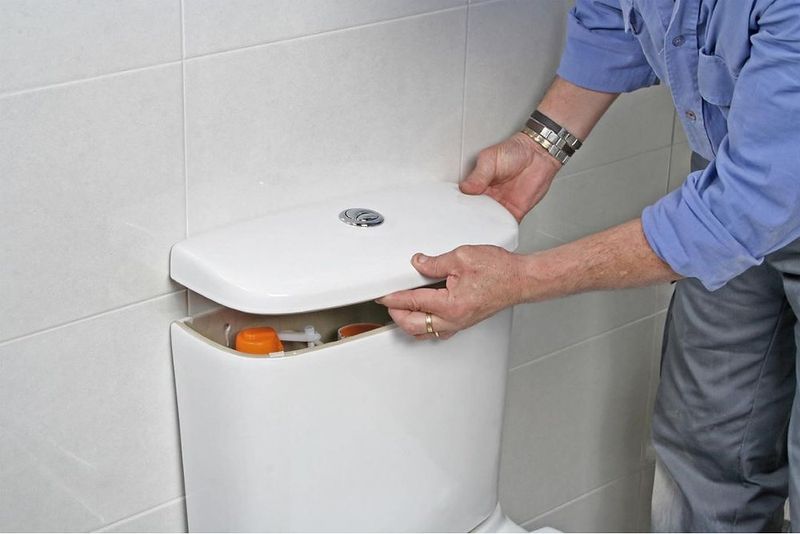
Soak Components in Vinegar
Place the flushing mechanism components in a container filled with white vinegar. Let them soak for 30 minutes to dissolve mineral deposits and grime.
Scrub Away Residue
Using a soft-bristle brush or toothbrush, gently scrub the components to remove any remaining buildup. Pay special attention to the flush valve, flapper, and rim jets, as these areas are prone to clogs.
Rinse and Reassemble
Rinse the components thoroughly with clean water. Reassemble the flushing mechanism and reinstall it in the toilet tank.
Test the Flush
Turn the water supply back on. Then, test the flush to ensure everything operates smoothly.
Top Brands of Dual Flush Toilets Known for Fewer Problems
When it comes to dual flush toilets, choosing a reliable brand can minimize common problems like clogs, leaks, or malfunctioning components.
Here are three leading brands known for producing high-quality dual-flush toilets with fewer toilet flushing problems:
Kohler
Kohler is a household name in the bathroom industry, known for its durable and innovative products. Their dual flush toilets feature cutting-edge technology. For example, AquaPiston flushing provides a powerful yet water-efficient flush.
Kohler toilets are designed with high-quality materials, reducing the likelihood of leaks and other mechanical failures. Additionally, their sleek designs and easy-to-maintain parts make them a top choice for homeowners and professionals.
Jabra Sanitary
Jabra Sanitary is recognized for its water-saving solutions and robust dual flush systems. Their toilets often feature easy-to-adjust flush mechanisms.
This feature ensures consistent performance with minimal maintenance. Jabra's toilet products are also highly durable, offering a long lifespan and a reduced risk of frequent repairs.
American Standard
American Standard is synonymous with reliability and efficiency. Their dual-flush toilets are engineered to provide a powerful yet silent flush while conserving water.
It features user-friendly designs, durable components, and easy replacement parts. Therefore, American Standard toilets are a trusted choice for households looking for hassle-free performance.
FAQs
How does a dual flush toilet work?
A dual-flush toilet is designed with two flush options to conserve water: a half flush for liquid waste and a full flush for solid waste.
This system uses two separate buttons or levers to release different amounts of water, typically 3-4 liters for a half flush and 6-9 liters for a full flush.
By using only the water needed for each type of flush, these toilets are more eco-friendly and cost-effective compared to traditional single-flush models.
Why is my toilet not filling up with water after a flush?
If your toilet isn't refilled after a flush, it could be due to a partially closed water supply valve, a clogged fill valve, or a malfunctioning float mechanism.
Check the water supply valve to ensure it is fully open. Clean or replace the fill valve if sediment buildup is restricting water flow. Additionally, inspect the float to ensure it is properly adjusted.
Can I retrofit my old toilet to a dual-flush toilet?
Yes, many retrofitting kits are available to convert standard single-flush toilets into dual-flush systems. These kits include dual-flush buttons, flush valves, and installation instructions.
Retrofitting can be a cost-effective way to upgrade to water-saving technology without replacing the entire toilet.
Which toilet is better, dual flush or single flush?
Dual flush toilets are generally better for water conservation, as they allow users to choose the flush volume based on waste type.
Single-flush toilets, however, may be simpler to use and maintain. The choice depends on your priorities. However, for households aiming to save water and reduce bills, dual flush toilets are the superior option.
Will upgrading to a dual-flush toilet pay for itself in terms of water savings?
Yes, upgrading to a dual-flush toilet can lead to significant water savings. For example, a family of four can save thousands of liters of water annually. It often translates into noticeable financial savings within a few years.
Final Thoughts
Dual flush toilets are a modern solution that promotes water efficiency. However, we can experience many common problems with them.
Through regular maintenance, such as cleaning components replacing worn-out parts, and addressing weak flushes, incorrect flushing behavior, or leaks, homeowners can maintain the functionality and longevity of their toilets.
Understanding the dual-flush system and troubleshooting the problems with dual-flush toilets can also save time and money. Besides, it can reduce the need for professional repairs.
If you encounter problems like dual flush toilets not flushing completely, leaking into a bowl, or dual flush buttons not working, you can contact Jabra Sanitary support team for help! We are the top choice for solving your dual flush toilets problems!







